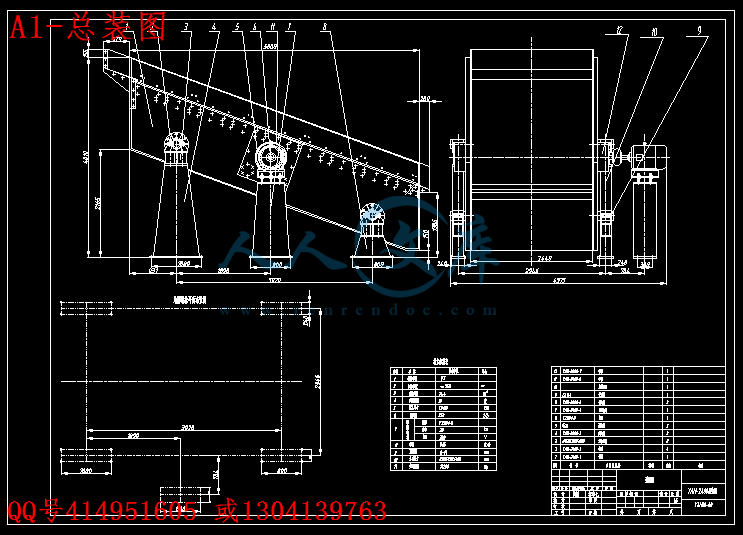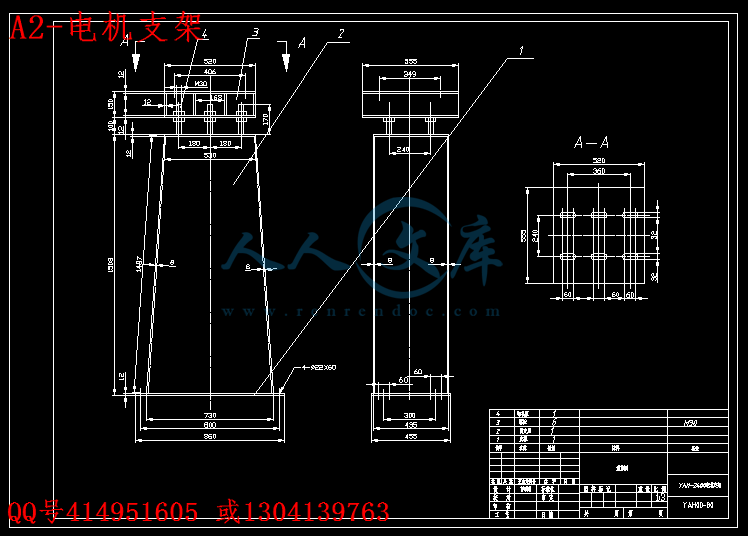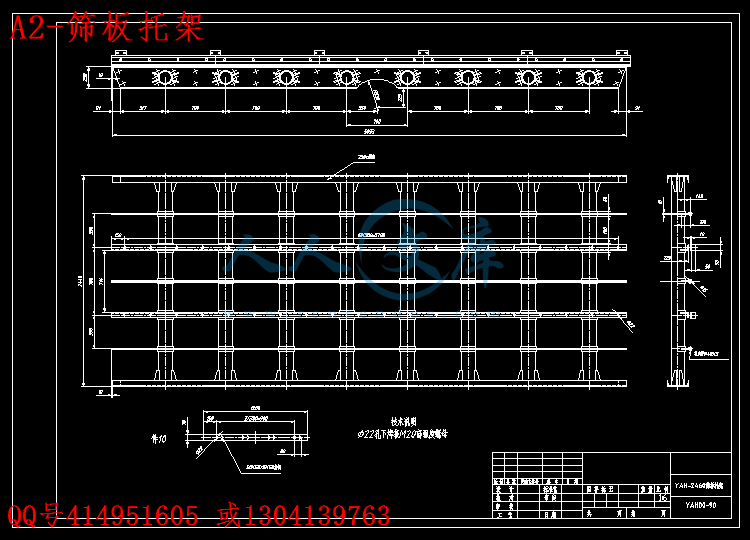【温馨提示】 购买原稿文件请充值后自助下载。
[全部文件] 那张截图中的文件为本资料所有内容,下载后即可获得。
预览截图请勿抄袭,原稿文件完整清晰,无水印,可编辑。
有疑问可以咨询QQ:414951605或1304139763
目录
1 绪论 1
1.1前言 1
1.2背景 1
2振动筛筛面物料运动理论 5
2.1筛上物料的运动分析 5
2.2正向滑动 6
2.3反向滑动 7
2.4跳动条件的确定 8
2.5物料颗粒跳动平均运动速度 9
3.振动筛的工作原理及结构组成 10
3.1圆振动筛的工作原理 10
3.2振动筛基本结构 11
4.振动筛动力学基本理论 12
5.振动筛参数计算 16
5.1运动学参数的确定 16
5.2振动筛工艺参数的确定 18
5.3动力学参数 19
5.4电动机的选择 19
6主要零件的设计与计算 22
6.1轴承的选择与计算 22
6.2皮带的设计 23
6.3轴的设计 26
6.4支承弹簧设计验算 29
7振动筛的安装维护及润滑 32
7.1振动筛的安装及调试 32
7.2操作要点 33
7.3 维护与检修 34
7.4振动筛的轴承润滑的改进 35
结束语 36
参考文献 37
致 谢 38
附录A 39
YAH2460型圆振动筛设计
班级:0781052班 姓名:彭明明
指导老师:封立耀
摘要
目前我国各种选煤厂使用的设备中,振动筛(筛分机)是问题较多、维修量较大的设备之一。这些问题突出表现在筛箱断梁、裂帮、稀油润滑的箱式振动器漏油、齿轮打齿、轴承温升过高、噪声过大等问题,同时伴有传动带跳带、断带等故障。这类问题直接影响了振动筛(筛分机)的使用寿命,严重影响了生产。YAH—2460型圆振动筛可以很好的解决此类问题,因此本次设计的振动筛为YAH—2460型圆振动筛,该系列振动筛主要用于煤炭行业中物料分级、脱水、脱泥、脱介等作业。其工作可靠,筛分效率高,但设备自身较重。设计分析论述了设计方案,包括振动筛的分类与特点和设计方案的确定;对物料的运动分析;对振动筛的动力学分析及动力学参数的计算;合理设计振动筛的结构尺寸;进行了激振器的偏心块等设计与计算,包括原始的设计参数,电动机的设计与校核;进行了主要零部件的设计与计算,皮带的设计计算与校核,弹簧的设计计算,轴的强度计算,轴承的选择与计算,然后进行了设备维修、安装、润滑及密封的设计,最后进行了振动筛的环保以及经济分析。
关键词:振动筛;激振器;圆振动筛
YAH-2460 type of round shaker Design
Class:0781052 Student name:pengmingming
Supervisor:fengliyao
Abstract
At present, China's coal preparation plant all the equipment used in the shaker is more problems, maintenance of one of the larger equipment. These issues in sieve outstanding performance me off beam, crack help, lubrication oil dilute the box-type vibrator oil spills, fighting tooth gear, bearing temperature rise too high, major issues such as noise, accompanied by dancing with broken belts, such as fault zone. Such issues directly affecting the life of the shaker, which has seriously affected the production. YAH—2460round good shaker can solve such problems, so this shaker designed for roundYAH—2460shaker, the series of major shaker in the materials used in the coal industry classification, dehydration, desliming, such as referrals from
Operations. Its reliable, efficient screening, but their heavy equipment. Design analysis on the design options, including the classification and shaker features and design programmes to be confirmed; materials on the movement of the shaker and the dynamics of the parameters, to design the structure of vibrating screen size; conduct The eccentric block of the exciter, such as design and calculation, including the original design parameters, motor design and verification; were the main components of the design and calculation, belts and check the design and calculation, the design of spring, the axis of Strength, the choice of bearings and calculation and then proceed to the maintenance of equipment, installation, lubrication and seal the design, a shaker final environmental and economic analysis.
Key words: shaker; Vibrator; round shaker






 川公网安备: 51019002004831号
川公网安备: 51019002004831号